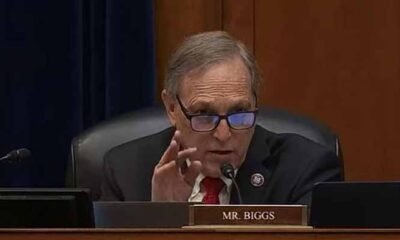Aaron Flannery
Voter Form Issues Drop Arizonans from Rolls Right Before Primary

Issues with paper voter registration forms are causing significant problems for many Arizona residents, preventing them from being added to voter rolls ahead of the primary election. A Votebeat analysis reveals that these forms, frequently distributed by civic groups and political parties, contain inaccuracies or missing information, complicating the work of election officials.
Maricopa County data shows that about one-third of voters who attempted to register with paper forms in the lead-up to the July 1 deadline were blocked despite likely being eligible. Statewide, roughly 24,000 residents had their registrations placed on hold due to form errors.
Election officials, including Janine Petty from Maricopa County, emphasize the shared goal of registering voters but underline the necessity of legal compliance. In counties like Apache, additional challenges arise due to the use of physical or natural landmarks instead of residential addresses.
Former secretaries of state have highlighted these form issues for over a decade. However, lawmakers remain divided on solutions. Republican proposals include stricter regulations for voter registration groups, while Democrats and civic organizations advocate for reforms like automatic voter registration.
Pinny Sheoran of the League of Women Voters supports improved training for canvassers to ensure form accuracy. Sheoran highlights the importance of meticulous form completion to avoid disenfranchising voters who believe they are registered.
Despite many Arizonans registering electronically, political parties and advocacy groups submit thousands of paper forms near registration deadlines. Maricopa County, for instance, received 2,980 paper forms before the July 1 deadline, but only 682 new voters were added to the rolls due to errors in others.
Duplicate or incorrect forms, even from already registered voters, can lead to “suspense status,” requiring resolution before the voter is added back to active rolls. Notification laws mandate counties to inform voters of status changes, but timely corrections are not always made.
The effectiveness of voter registration organizations varies. Poder Latinx, a notable success during the period studied by Votebeat, registered 92% of form submitters due to rigorous training and follow-ups. Proper training can alleviate some burden on county officials, as noted by Pima County Recorder Gabriella Cázares-Kelly, who advocates for automatic voter registration to reduce workloads and improve voter outreach.
Apache County, with a small staff, often spends significant time clarifying form errors. Forms with fictitious names exacerbate the situation, suspected to be submitted by pay-per-form circulators. Legislation proposed by Republican Sen. Ken Bennett seeks to curb such practices but faces opposition from voting rights groups.
Yavapai County faces issues with prefilled mailers containing outdated or incorrect voter information, contributing to voter confusion and mistrust. Recorder Michelle Burchill argues against allowing prefilled forms, citing significant problems and unnecessary voter frustration.
While voter registration challenges persist, possible solutions include enhanced training for registration workers, automatic voter registration, and stricter regulations on third-party mailing forms. However, bipartisan cooperation remains necessary for effective legislation to protect the integrity of voter registration in Arizona.


















